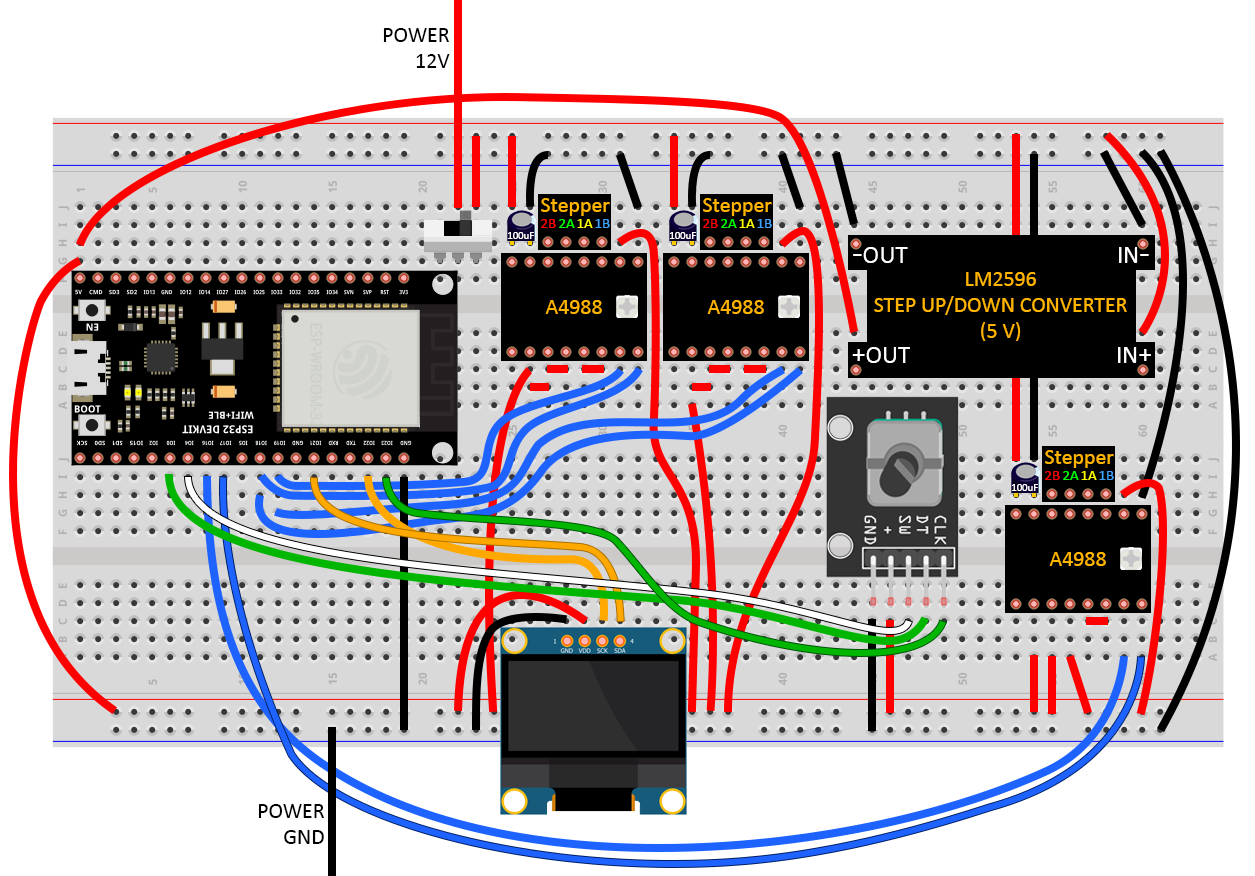A 3D printed automatic wire stripper and cutter. You simply choose your measurements on a screen, press a button, and it does it all for you. It will strip the wire and cut the wire depending on the options you chose.
There is a video associated with this repository/project, I highly recommend watching it before using this repo.
You can find the Arduino sketch in the /AutoWireCutterStripper directory.
- Make sure that the i2c address (
#define i2c_Address 0x3c), corresponds to your OLED display i2c address, which you will find in the datasheet of your OLED display.
All these libraries can be easily installed using the Arduino IDE library manager.
Stepperby Arduino.Encoderby Paul Stoffregen.Adafruit GFX Libraryby Adafruit.Adafruit SH110Xby Adafruit.
- ESP32, for the micro-controller. When uploading code, ensure that you hold down the on board BOOT button on the ESP32.
- 12V 5A power supply.
- LM2596 or any step down converter, to convert 12V to 5V for the ESP32.
- Nema 17 stepper motor (x3), two for the linear motion, one for the extruder.
- A4988 stepper motor driver (x3), to drive and control the stepper motors.
- 100uF capacitor (x3), for the 12V power pins for each of the A4988 drivers.
- OLED display, 1.3inch, 128x64.
- Rotary encoder with button.
- Power switch, to turn on and off.
- 3D printer filament extruder, for the wire feeder.
- D8mm L100mm lead screw (x2), for the linear motion.
- D8mm lead screw nut (x2), to attach the top blade housing to the lead screws.
- 5x8mm rigid shaft coupler (x2), to attach the lead screws to the stepper motors.
- 10mm magnets (x2), to attach the container.
- KNIPEX V-blades, to cut and strip the wires.
Please refer to the /3d_printing directory.
This is the layout of the components on the board. Use this only for reference on roughly where you should fix the components to the board. I don't suggest using this for exact measurements as you should position the components where it is appropriate for your version of the project.

